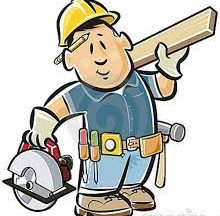 December 2023
December 2023
There is always room for improvement in any high-rise community. Renovating or upgrading for aesthetics increases the value of your home and enhances common areas. There is always machinery or equipment that can be upgraded to something that performs better or is more economical.
There are risks to all improvements. Most require some level of regulatory compliance that may require design or décor decisions. Cost is always a consideration since there is rarely enough money to do what everyone wants. Few improvements end up being simple.
Something as straightforward as redesigning the lobby or hallway to make it look nicer can quickly become complicated. The renovation may trigger a requirement to bring the alarm, fire suppression and sprinkler systems to current standards. Changes may be necessary to make the space more easily accessible to those with disabilities.

The construction phase of any renovation project is the easiest part. The difficulty is working with a board of directors, condominium manager, and everyone who lives in the building. Construction hours are limited. Protection around the construction space is necessary. Curious residents want to wander through the area and some will have complaints. One doesn’t like the construction smells. Another is concerned about paint colour or carpeting.
Planning is the best way to reduce risk, surprises and to remain within budget. Brown & Beattie advises that “An engineer should be consulted before renovations or major equipment upgrades to help anticipate changes that could trigger required compliance with regulatory codes. Simple changes in the planning stage, and full costing of a project in advance, are more economical than learning of compliance requirements in the middle of a project.”
A professional designer is recommended for any common area renovation project. Part of their role is to look beyond immediate aesthetics and physical structure. They consider not only what looks good now but what will endure. Value they provide includes suggesting what looks good while working with a limited budget and knowledge of available products.
Project Management
Every project should require that one person be involved from inception to completion. Their role is to manage the various vendors, be on site on a regular basis, and address problems or questions when they arise. In condominium communities, this role typically defaults to the condominium manager although a director, committee member or other individual may fill the role. When no individual with the time and expertise is available, a specialist can be employed. Where expertise is necessary for a highly technical project such as elevator replacement or equipment upgrades, specialized consultants are available.
Design by Committee
A design or decorating committee may be established to oversee a particular project. The committee should be composed of stakeholders with varied interests and expertise to best represent the needs of the community. The more people involved, the harder it is to make decisions. Committees of no more than five individuals are most effective.
One of the challenges in a community is that everybody considers themselves to be an expert. They watch home design shows, read décor magazines and surf the internet. There is no shortage of opinions about what looks good and what isn’t. The committee can solicit resident input, through meetings and written correspondence, and present useful ideas or comments to vendors through an established communication process.
Subject to board approval of a budget, the committee handles all aspects of the project. The board receives periodic reports and does not get involved in details unless requested by the committee or if project scope extends beyond what has been approved. One individual should be assigned as primary to interact with contractors or vendors, and to communicate with the board. This is the person a designer or contractor comes to if there are problems, concerns or surprises.
Regardless of how a project is managed, there should be very few ultimate decision makers, and these individuals should be part of the entire process. When a project spans multiple years and composition of the board changes, changing who are the ultimate decision makers frustrates those trying to complete a project on time, on budget and according to an agreed upon plan.








